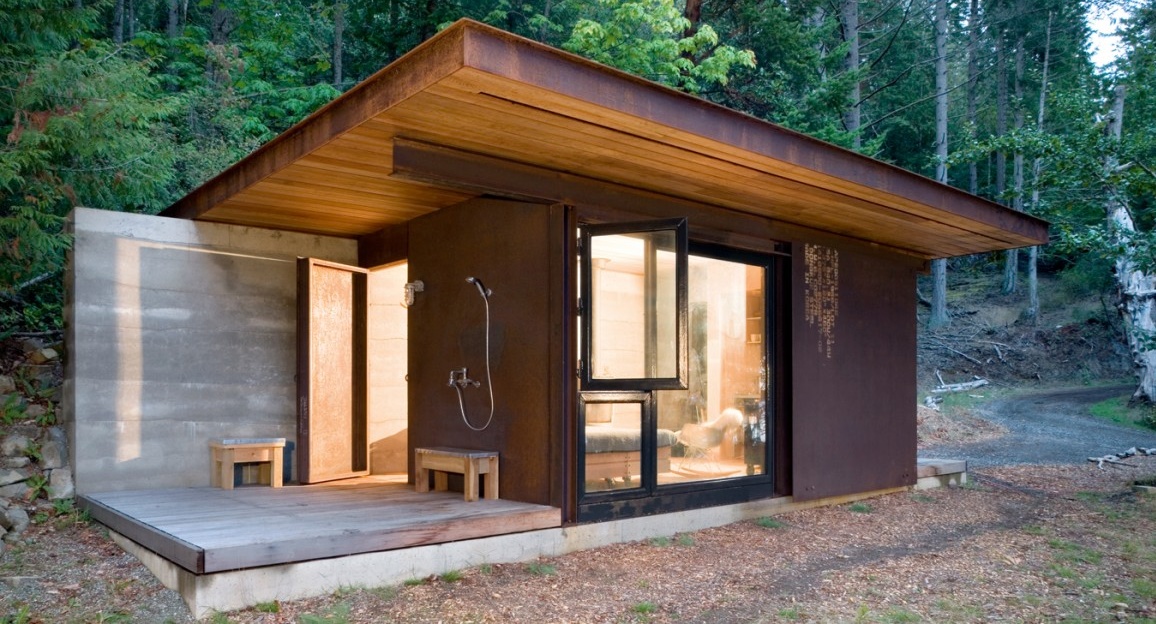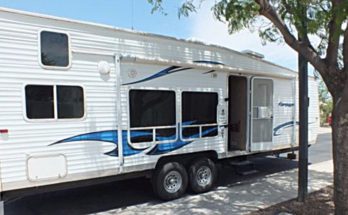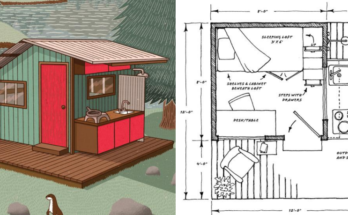No maintenance. No energy bill. Yet a clean, sturdy prefab modular shelter. That’s what this particular modular cabin seems to be about. It’s a steel clad one-room house, and they put this one on a small island where it is thought it may one day blend in and become even more a part of the landscape.
That’s because of the steel cladding on this cabin, and the printing on the metal sheets will some day fade. The material weathers, becoming more “natural.” The interior of this cabin is also metal (and wood). The metal surfaces are made in large from a local bridge that was demolished. The cedar used in the structure is from fallen logs on the property.
Some of that metal sheeting covers the modular cabin — it was built on site so it isn’t a prefab house, but this is definitely the kind of house you could pick up and move, and add to other small modules — are the actual walls, while other are screens that can be pulled over the windows. This allows the cabin owner to adjust how much light gets in.
For those of you wondering about facilities, this modular cabin reminds me of a small boat, but even more basic than most small boats. There is a kitchenette in the one room. And there is a toilet area, but not a bathroom. The heads of most boats have a toilet area around the same size, although they have a cloth or solid door. This little cabin doesn’t have either, although it could of course be added.
The shower is outside the cabin, as is a pile of wood. This cabin is heated by a wood stove — no other energy system has been put in. The ideas behind this little cabin are simple living and no energy bills.
It was designed by Tom Kundig Of Olson Kundig, who has caught quite a good amount of attention for several of his small home designs, cabin designs, and others. It’s set on the Gulf Islands off the coast of Vancouver Island, B.C. To see more of Olson Kundig’s work, find him in our directory of designers.



